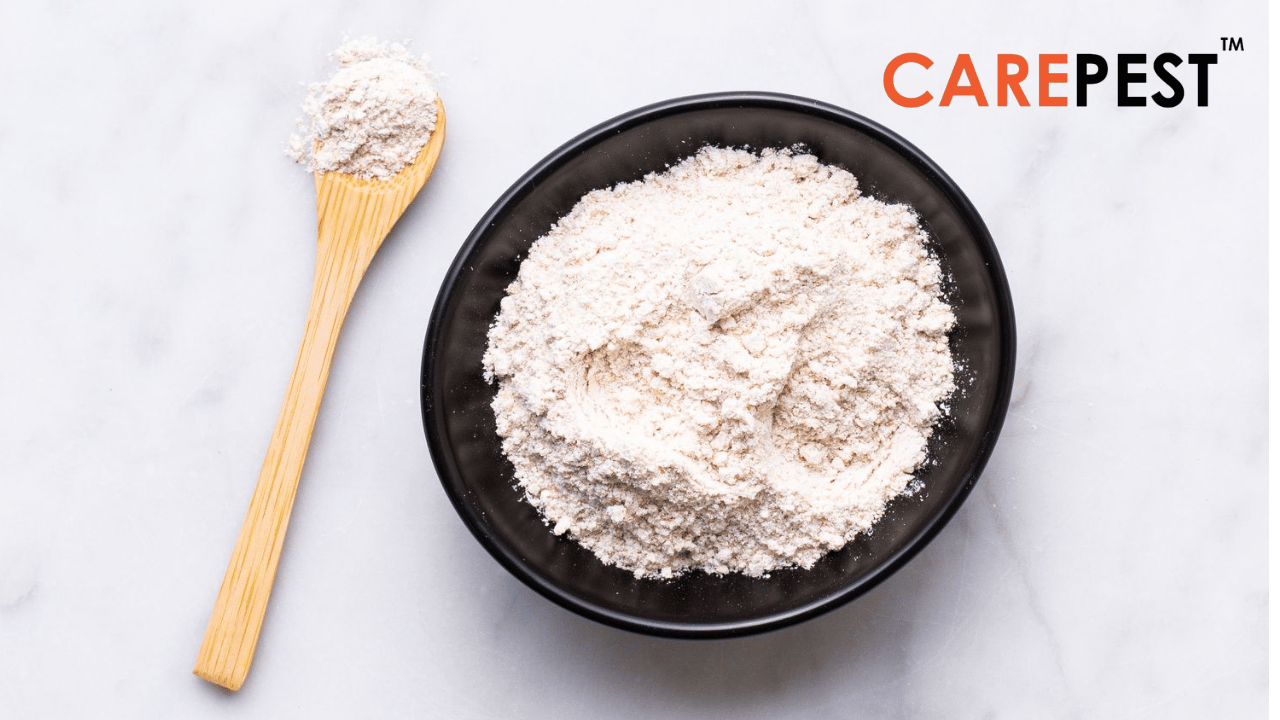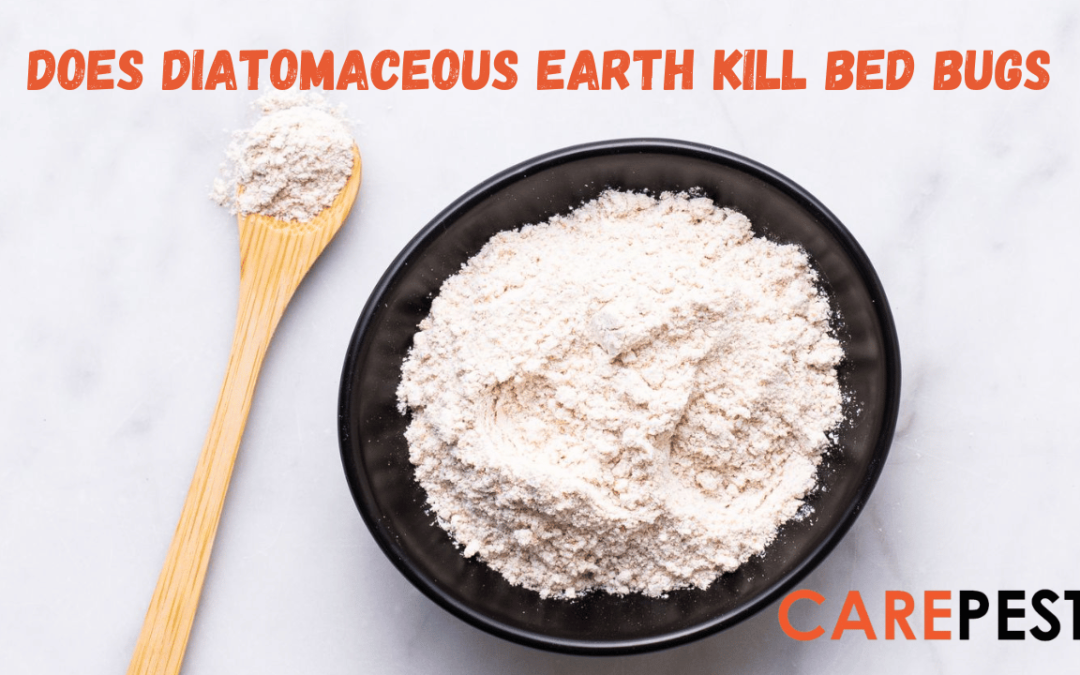Diatomaceous earth, a natural pest control remedy, has gained popularity for its ability to tackle various insect problems, including the dreaded bed bug infestation. Made from the fossilized remains of tiny aquatic organisms known as diatoms, this powdery substance dehydrates insects upon contact. As bed bugs come into contact with diatomaceous earth, their protective outer layer is compromised, leading to dehydration and eventual death. This method offers a non-toxic, environmentally friendly alternative to chemical pesticides, making it an attractive option for households seeking to eliminate bed bugs safely. However, effectiveness can vary, and it’s essential to understand its proper application to ensure success.
What is Diatomaceous Earth?
Diatomaceous earth, frequently praised as a marvel of nature, is a fine, powdery substance that originates from the fossilized remains of diatoms, which are microscopic aquatic organisms. The magic lies in the diatoms’ cell walls, which are made of silica, a naturally occurring substance. When these diatoms died millions of years ago, their remains accumulated in sedimentary deposits, which are now mined to produce diatomaceous earth. Its unique composition gives it remarkable versatility, finding uses in everything from natural pest control to food production and even in beauty products. Diatomaceous earth works wonders in the garden and home, tackling pesky insects without resorting to harsh chemicals, making it a favorite among eco-conscious individuals. Its porous nature also lends itself to filtration processes, purifying everything from water to wine. Diatomaceous earth’s high silica content, when used as a dietary supplement, celebrates its health benefits beyond its practical applications. This intriguing substance seamlessly bridges the gap between ancient fossilized resources and modern-day sustainability efforts, offering a natural solution to a wide array of challenges. For those keen to dive deeper into its multifaceted uses and benefits, further reading on reputable educational and environmental websites can provide comprehensive insights and practical tips on harnessing this natural marvel.

Important safety information
Exercise caution with diatomaceous earth (DE) due to its potential to irritate the skin and cause breathing difficulties when airborne. Before employing DE as a defense mechanism against bed bugs, it’s vital to differentiate between its available forms.
The versions labeled as pool grade or garden grade are intended strictly for filtration applications. We subject these to a heat treatment process that strengthens the diatom shells, resulting in a high content of crystalline silica—a substance harmful to both humans and pets.
On the other hand, food-grade diatomaceous earth is not heat-treated and contains a crystalline silica content of less than 1%, rendering it safe for inclusion in animal feeds and for combating insect invasions, such as those by bed bugs.
It is imperative to use only food-grade diatomaceous earth for tackling bed bugs and other pest issues within your living spaces. The use of pool-grade or garden-grade DE products indoors is strongly discouraged due to health risks.
Is diatomaceous earth effective?
Diatomaceous earth (DE) stands as a testament to nature’s ingenuity, offering a simple yet effective solution against a variety of pests, including bed bugs, fleas, and garden insects. Its efficacy lies in its mechanical action—the microscopic, sharp edges of diatom fossils cut through the exoskeletons of insects, leading to dehydration and death. This non-chemical pest control method is especially appealing for those seeking eco-friendly and sustainable solutions. However, its effectiveness can vary based on the application method and the type of pests targeted. For instance, while DE shows promising results in dry environments against crawling pests, its impact is less pronounced in humid conditions or against flying insects. Furthermore, it’s crucial to choose food-grade DE for home and garden use to ensure safety for humans and pets. For a deeper dive into the specific applications and effectiveness of diatomaceous earth, exploring research studies and expert guidance on reputable environmental and agricultural websites can provide valuable insights.
How to Use Diatomaceous Earth to Kill Bed Bugs?
To harness the power of diatomaceous earth (DE) in your battle against bed bugs, follow these strategic steps for a safe and effective approach. Firstly, ensure you’re using Food Grade DE, the only type safe for home pest control. Begin by thoroughly cleaning the affected areas, including vacuuming floors, mattresses, and furniture to remove any debris and bed bugs. After cleaning, apply a thin, even layer of DE to bed bug hotspots, such as mattress seams, bed frames, and baseboards. Use a brush or dust applicator for precise application, avoiding thick layers that bed bugs might circumvent. Leave the DE undisturbed for several days, allowing it to work its desiccating magic on the bed bugs. After 7–10 days, vacuum up the DE, along with the dead bed bugs. Continue the process as necessary to eliminate all bed bugs and their eggs. Remember, patience and thoroughness are key, as DE takes time to affect the bed bugs. For more detailed guidance, including safety precautions and tips for preventing future infestations, consulting resources on pest control and natural remedy websites can be incredibly helpful.
Tips for Using Diatomaceous Earth
Navigating the use of diatomaceous earth (DE) requires a blend of caution, precision, and understanding to maximize its benefits while minimizing risks. A crucial tip is to use Food Grade DE for any household pest control or dietary supplement, ensuring safety for both humans and pets. When applying DE for pest management, a light, even dusting is more effective than a heavy application; pests must come into contact with the powder for it to work, and they’re likely to avoid thick piles. Donning protective gear, such as masks and gloves, can prevent irritation to the lungs and skin, highlighting the importance of handling DE with care. Additionally, maintaining dry conditions enhances DE’s efficacy, as moisture can lessen its pest control capabilities. Regular application may be necessary; pests like bed bugs can take up to ten days to dehydrate. Lastly, integrating DE into a holistic pest management strategy, including cleanliness and sealing entry points, can provide a robust defense against unwelcome guests.
How long does it take to work?
The timeline for diatomaceous earth (DE) to exhibit its pest-controlling prowess is not immediate, requiring both patience and realistic expectations. Upon application, DE begins its work by lacerating the exoskeletons of pests upon contact, leading to dehydration. However, this process is not instantaneous. The effectiveness and speed at which DE operates can vary significantly based on several factors, including the type of pest, the environment’s humidity, and the thoroughness of the DE application. Typically, homeowners might start observing a reduction in pest activity within a few days, with more substantial results visible within a week or two. For persistent pests like bed bugs, it may take up to 10 days to see a noticeable decline. It’s critical to maintain a consistent layer of DE in problem areas during this period and reapply as necessary, especially after cleaning or in areas of high moisture, to ensure ongoing effectiveness. Remember, DE is a marathon runner in the race against pests, not a sprinter, offering a gradual yet safe method for managing unwanted guests.
Where do I look for diatomaceous earth?
Discovering where to procure diatomaceous earth (DE) is akin to embarking on a quest for a versatile, natural solution for everything from pest control to dietary supplements. The journey begins at your local garden supply or home improvement stores, where Food Grade DE is frequently available for pest management and household use. These establishments are treasure troves for eco-conscious individuals seeking to enhance their home environments safely. If your pursuits lean towards the health-conscious or if you’re in need of a pet-friendly option, health food stores and pet supply shops frequently stock Food Grade DE, catering to a holistic lifestyle. For those who prefer the convenience of online shopping, a plethora of options await on e-commerce platforms, offering a wide range of DE products with the added benefit of customer reviews to guide their choice. This accessibility ensures that whether you’re combating pests, seeking a natural cleanse, or enhancing your garden, DE is just a few clicks or a short drive away
FAQs on Does Diatomaceous Earth Kill Bed Bugs?
Is Diatomaceous Earth safe to use around pets and humans when combating bed bugs?
Generally, Diatomaceous Earth is considered safe for humans and pets, as it’s a natural product. However, it’s essential to use food-grade DE and follow safety instructions carefully. While DE is non-toxic, it can still irritate the respiratory system if inhaled in large amounts. Therefore, it’s advisable to wear a mask during application, especially if applying it in a confined space.
How long does it take for Diatomaceous Earth to eliminate bed bugs?
The time it takes for Diatomaceous Earth to eradicate bed bugs can vary depending on several factors, including the extent of the infestation and how effectively DE is applied. In ideal conditions, bed bugs that come into contact with DE should start to die within 24-48 hours. However, complete elimination of an infestation may take several weeks or even months, as it requires repeated applications and thorough treatment of all affected areas. Regular monitoring and reapplication may be necessary to ensure all bed bugs and their eggs are eliminated.
If you are looking for Bedbugs Services in Dhaka. Call Us Today

